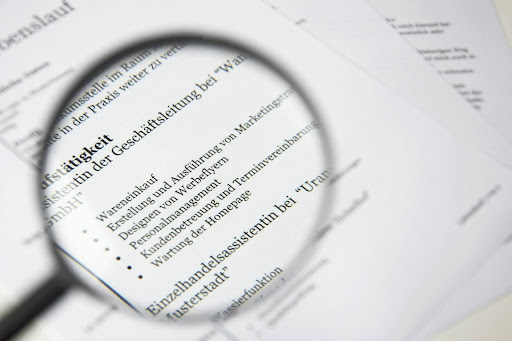I like to think of a writing project as a building construction. As the author, you have the idea, but you need a professional architect to recreate it in a way that will make sense to the reader. That architect is the editor. So, what is the role of editing in publishing?
Editing is all about, transforming raw manuscripts into polished, publishable works. In this article, we shall explore the role of editing, highlighting the various stages of the editing process, and the differences between editing and proofreading. Understanding this is crucial for authors, aspiring editors, and the publishing industry.
The Role of Editing in Publishing

Most people think of editing as correcting grammar and punctuation. Editing is a comprehensive process that enhances the clarity, coherence, and overall quality of a manuscript. The role of editing is to ensure that the final product is engaging, accurate, and suitable for its intended audience.
Enhancing Readability
The primary goal of editing is to improve readability. Editors refine the text to make it clearer and more accessible to readers, ensuring that the narrative flows smoothly and the message is conveyed effectively.
Ensuring Consistency
As an author, you are building a personality with a specific tone and characteristics for your readers through your writing. This voice must remain consistent throughout your book so that you don’t get off track. Your editor ensures that your manuscript adheres to a consistent style and tone throughout. This includes uniformity in spelling, grammar, punctuation, and formatting, essential for maintaining the professional quality of the text.
Improving Structure and Flow
Your editor will assess the organization of your content, ensuring ideas are presented logically and coherently. This may involve rearranging paragraphs, sections, or even entire chapters to enhance the narrative structure.
Schedule a consultation with me to talk about the role of editing in publishing and how I can help.
Fact-Checking and Accuracy
Ensuring the accuracy of content is another role of editing. Editors verify facts, figures, and references to ensure the information presented is correct and reliable. This is particularly important for non-fiction works where accuracy is paramount.
Stages of the Editing Process in Publishing

The editing process in publishing typically involves several stages, each focusing on different aspects of the manuscript. Understanding these stages helps authors and editors collaborate effectively to produce high-quality work.
Developmental Editing
This is the first stage of the editing process. It involves a comprehensive review of the manuscript’s overall structure, content, and narrative flow.
at this stage, your editor will focus on:
- Plot and Character Development: For fiction, developmental editors assess the plot, pacing, and character arcs, suggesting improvements to enhance the story’s coherence and impact.
- Argument and Evidence: For non-fiction, the focus is on the logical presentation of arguments and the adequacy of supporting evidence.
- Big Picture: Editors provide feedback on the manuscript’s strengths and weaknesses, suggesting substantial revisions to improve overall quality.
Structural Editing
Structural editing focuses on the organization and logical flow of the manuscript. It’s a detailed review that ensures the content is arranged coherently and effectively.
Here, your editor will focus on:
- Chapter and Section Organization: Editors evaluate the order of chapters and sections, ensuring a logical progression of ideas.
- Transitions and Flow: They improve transitions between paragraphs and sections to maintain a smooth narrative flow.
- Redundancies and Gaps: Structural editors identify and eliminate redundant content and fill in gaps where additional information is needed.
Copy Editing
Copy editing, also known as line editing, involves a detailed review of the manuscript’s language, style, and clarity. This stage ensures that the text is polished and ready for publication.
Your editor focuses on:
- Grammatical and Punctuation issues: Correcting grammatical, punctuation, and spelling errors.
- Clarity and Style: They refine the language to improve clarity, conciseness, and readability, ensuring that the author’s voice is consistent and engaging.
- Consistency: Copy editors check for consistency in style, tone, and formatting, adhering to the publisher’s style guide.
Proofreading
Proofreading involves a meticulous review of the manuscript to catch any remaining errors before publication.
This is the role of editing at this stage:
- Typos and Minor Errors: Proofreaders identify and correct typographical errors, misspellings, and minor grammatical mistakes.
- Formatting Issues: They ensure that the text is properly formatted, checking for issues such as improper alignment, inconsistent fonts, and incorrect headings.
- Final Checks: Proofreaders perform a final read-through to ensure the manuscript is error-free and ready for printing or digital release.
Roles and Responsibilities of Editors

Editors play various roles in the publishing process, each with specific responsibilities. Understanding these roles can help clarify the multifaceted nature of editing. Schedule a discovery call and let’s talk about how I can help with your writing project.
Developmental Editor
- Manuscript Assessment: Evaluating the overall quality of the manuscript and providing detailed feedback.
- Big Picture Revisions: Suggesting substantial changes to improve plot, structure, and character development for fiction, or argument and evidence for non-fiction.
- Author Collaboration: Working closely with the author to refine the manuscript’s content and structure.
Structural Editor
- Organizational Review: Assessing the manuscript’s organization and logical flow.
- Reorganization: Recommending changes to the order of chapters and sections to enhance coherence.
- Gap Identification: Identifying areas that require additional information or elaboration.
Copy Editor
- Language and Style: Refining the manuscript’s language for clarity, conciseness, and readability.
- Error Correction: grammatical, punctuation, and spelling errors.
- Consistency Checks: Ensuring consistency in style, tone, and formatting.
Proofreader
- Final Error Check: Identifying and correcting any remaining typographical errors, misspellings, and minor grammatical mistakes.
- Formatting Review: Ensuring proper formatting and layout consistency.
- Final Approval: Giving the final green light for publication after ensuring the manuscript is error-free.
The Impact of Editing on the Publishing Process

Editing has a profound impact on the publishing process, influencing the quality, readability, and success of the final product.
Enhancing Quality
Editing significantly enhances the quality of the manuscript, ensuring that it is well-written, coherent, and engaging. This is crucial for attracting readers and maintaining their interest.
Boosting Credibility
A well-edited manuscript boosts the author’s credibility and professionalism. Readers are more likely to trust and respect content that is polished and error-free.
Reader Satisfaction
Ultimately, editing contributes to reader satisfaction. A well-edited manuscript provides a seamless reading experience. The role of editing is to make it easier for readers to engage with and enjoy the content.
In conclusion…
Understanding the role of editing in the publishing process is essential for authors, editors, and anyone involved in the world of publishing. The editing process in publishing is multifaceted. It involves enhancing readability, ensuring consistency, improving structure, and verifying accuracy. It encompasses several stages, each with its focus and objectives, and requires collaboration between authors and editors.
If you would like to know more about this subject or are interested in getting my professional help for your writing, editing, or the publishing process, click here.






